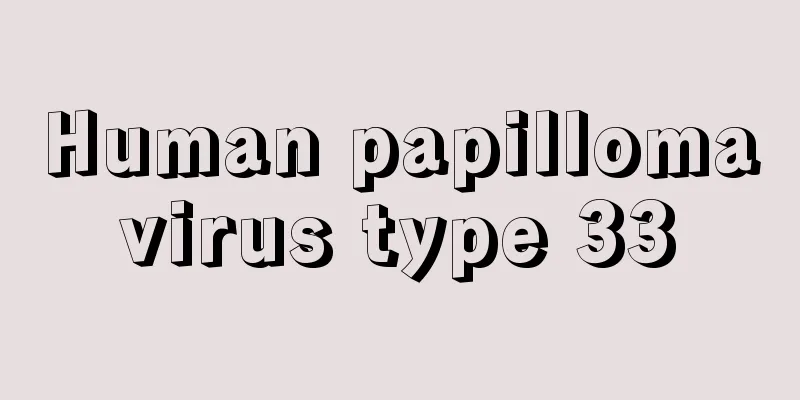Human papillomavirus type 33

|
The human nipple is an important organ, but this part is very fragile and can easily cause infection by some fungi and bacteria. This is especially true for breastfeeding mothers because the nipples are exposed to the air for a long time during breastfeeding, which may lead to the growth of bacteria. If you find anything unusual about your nipples, you should go to the hospital for treatment and cleaning in time. Let me introduce you to human papillomavirus type 33. Human papillomavirus is a genus of papillomavirus A belonging to the family Papovaviridae. It is a spherical DNA virus that can cause proliferation of the squamous epithelium of the human skin and mucous membranes. It manifests as symptoms such as common warts and genital warts (condyloma acuminatum). With the rapid increase in the incidence of genital warts among sexually transmitted diseases and the increase in cervical cancer and anal cancer, human papillomavirus (HPV) infection has attracted more and more attention. On October 27, 2017, the World Health Organization's International Agency for Research on Cancer published a preliminary list of carcinogens for reference. Human papillomavirus types 6 and 11, human papillomavirus β (except types 5 and 8) and γ are on the list of three categories of carcinogens. More than 130 types of human papillomavirus (HPV) have been isolated. Different types cause different clinical manifestations. According to the different tissue sites invaded, they can be divided into: (1) Low-risk skin types: including HPV1, 2, 3, 4, 7, 10, 12, 15, etc., which are associated with common warts, flat warts, plantar warts, etc.; (2) High-risk skin types: including HPV5, 8, 14, 17, 20, 36, and 38, which are associated with epidermodysplasia verruciformis. Other malignant tumors that may be associated with HPV infection include: vulvar cancer, penile cancer, anal cancer, prostate cancer, and bladder cancer. (3) Low-risk mucosal types such as HPV-6, 11, 13, 32, 34, 40, 42, 43, 44, 53, and 54 are associated with infection of the genital, anal, oropharyngeal, and esophageal mucosa. (4) High-risk mucosal types HPV-16, 18, 30, 31, 33, 35, and 39 are associated with cervical cancer, rectal cancer, oral cancer, and tonsil cancer. Biological activity: HPV is highly resistant and can withstand drying and long-term storage. It can be inactivated by heating or formalin treatment, so it can be inactivated by high-temperature disinfection and 2% glutaraldehyde disinfection. |
<<: Characteristics of hematuria caused by urinary system tumors
>>: Eyelid swelling caused by mosquito bites_Eyelid swelling caused by mosquito bites
Recommend
What foods can nourish the stomach?
I believe everyone should know that the stomach m...
What are the advantages of laser treatment of leukoplakia
Laser treatment of white spots is now a relativel...
How to hold urine quickly for B-ultrasound
For some gynecological examinations, B-ultrasound...
People who often stay up late should pay attention!
Due to the high pressure of life and work nowaday...
What's wrong with my swollen arm
Swelling in the arms should be taken seriously, a...
What are the benefits of eating mulberries? They actually have this function
Mulberry is a common food that many people have e...
What are the ways to keep warm in winter
As winter comes and the weather gradually becomes...
How to prolong life after having lung cancer? This can maximize the life expectancy of lung cancer patients
Although everyone wants to live a long life, once...
A brief analysis of the symptoms of advanced bone cancer
As the times progress, people's living standa...
Can soybeans still be eaten after being stored for a long time?
Most soybeans can be eaten if they have not deter...
The most effective method for pigeon crop inflammation
Pigeons are a common small animal in our country....
Can I still get pregnant if I have uterine cancer?
Uterine cancer is the most common gynecological m...
Is breast cancer smaller than 1cm considered microcancer?
Breast cancer that is smaller than 1 cm is genera...
Is it harmful to drink water soaked with Albizia Julibrissin
Soaking the flowers of Albizia Julibrissin in wat...
How to eliminate fleas
Cockroaches, rats, flies and mosquitoes are what ...









